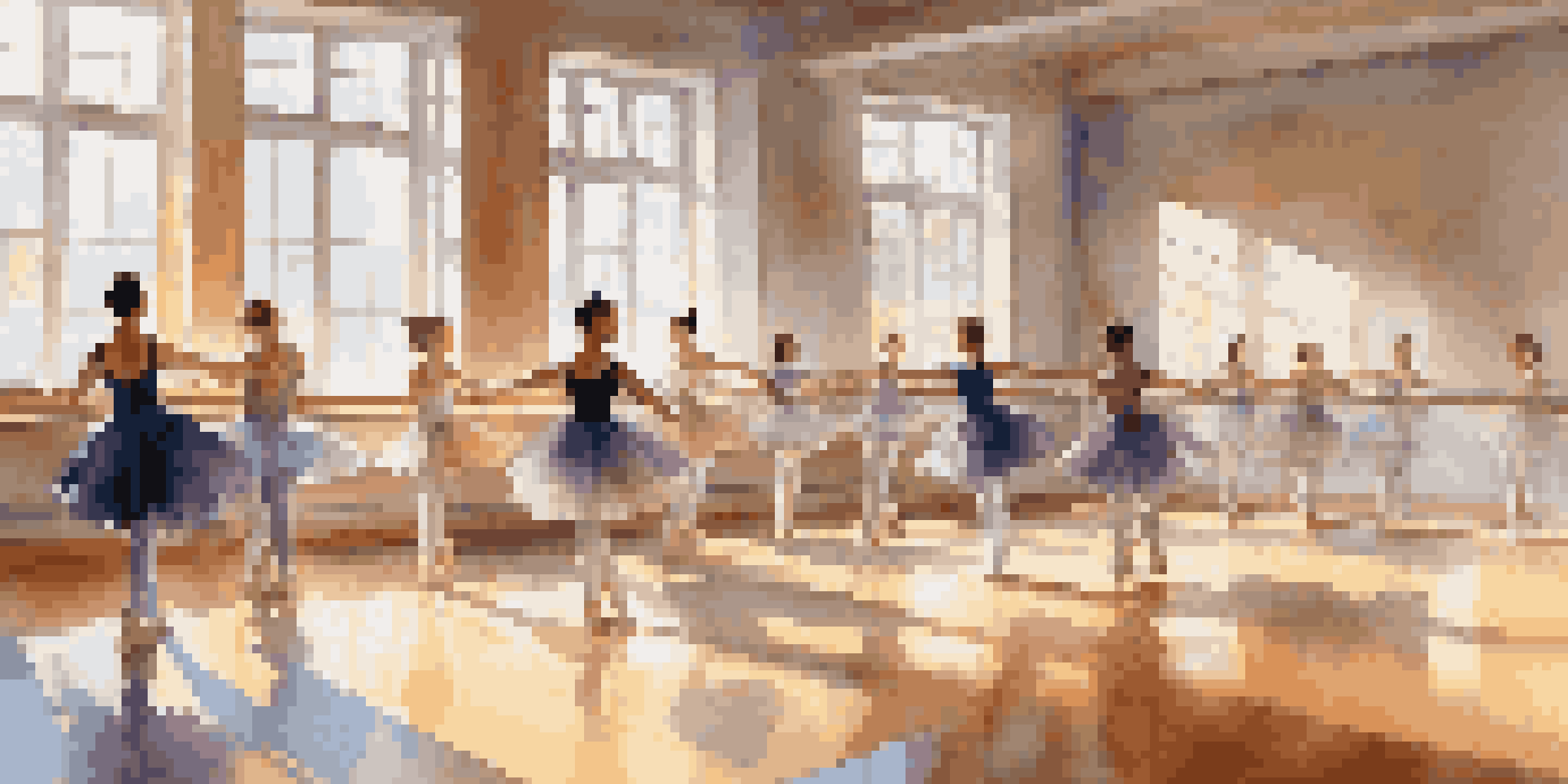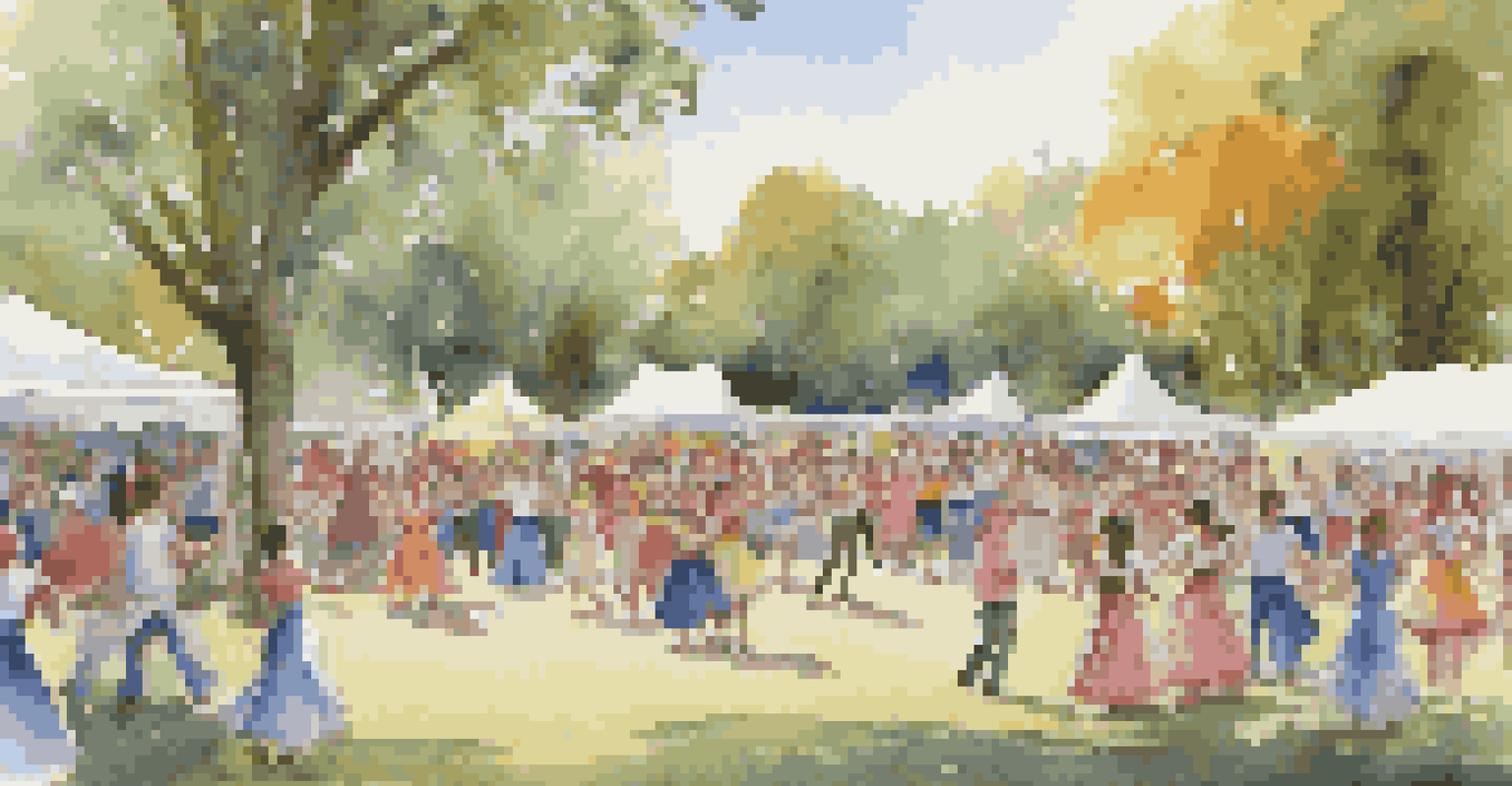Impact of Federal Funding on Dance Programs Nationwide

Overview of Federal Funding in the Arts
Federal funding has long played a crucial role in supporting the arts, including dance programs. Through initiatives such as the National Endowment for the Arts (NEA), funding is provided to various organizations, schools, and communities. This financial support allows for diverse and enriching dance experiences that might otherwise be unattainable.
The arts are not a luxury; they are a necessity for our communities and our country.
In recent years, there has been a growing recognition of the importance of dance education, not just as an art form but as a means of fostering creativity and community engagement. The NEA's grants help ensure that students across the country have access to high-quality dance instruction and performances. This funding often acts as a lifeline for many programs that rely on these grants to sustain their operations.
Ultimately, federal funding serves as an essential investment in the cultural fabric of the nation, allowing dance to flourish and evolve. It also emphasizes the idea that the arts are a vital part of society, deserving of both attention and support.
Benefits of Federal Funding for Dance Programs
One of the most significant benefits of federal funding is its ability to provide resources for underfunded dance programs. Many schools in low-income areas struggle to offer students a chance to explore dance, but grants can change that. With the right funding, programs can expand their offerings, hire qualified instructors, and even bring in guest artists to inspire students.

Moreover, federal funding often encourages collaboration between different arts organizations, which can lead to innovative projects that enrich the local community. For example, a dance program might partner with a local theater or music group to create a multidisciplinary performance. These collaborations not only enhance the educational experience for students but also strengthen community ties.
Federal Funding Supports Dance Growth
Federal funding through initiatives like the NEA is essential for dance programs, providing resources that allow them to flourish and engage communities.
Additionally, federal support can help dance programs develop outreach initiatives that bring dance to diverse audiences, including those who may not have access otherwise. This outreach can take many forms, from free workshops in community centers to performances in schools, ensuring that the joy of dance is shared widely.
Challenges Faced by Dance Programs Without Funding
Dance programs that lack federal funding often face significant challenges that can hinder their growth and sustainability. Without financial support, many schools are forced to cut arts programs, including dance, which can deprive students of valuable creative opportunities. This is particularly concerning in areas where dance could serve as a positive outlet for youth.
Dance is the hidden language of the soul.
In addition, the absence of funding can impact the quality of instruction. Programs without sufficient resources may struggle to attract experienced teachers or provide necessary materials, such as costumes and equipment. As a result, students might not receive the comprehensive education that dance can offer, limiting their potential.
Furthermore, the lack of funding can make it difficult for dance programs to engage with the community. Without the means to host events or performances, these programs miss out on opportunities to showcase their talent and connect with local audiences. This can create a cycle of underappreciation and underfunding.
Success Stories: Programs Thriving with Federal Support
Across the country, numerous dance programs have flourished thanks to federal funding, showcasing the impact it can have. For instance, the Dance Institute of Washington received grants that allowed it to expand its outreach initiatives, providing dance education to underserved communities. This success story demonstrates how federal support can transform lives through the power of dance.
Another example is the Boston Ballet's education and community outreach program, which has benefited from consistent funding. The program offers free classes and workshops to local schools, fostering a love for dance among students who might not have had access otherwise. This initiative not only builds skills but also instills a sense of belonging within the community.
Community Support Enhances Programs
Local involvement and advocacy are crucial for sustaining dance programs, as they amplify the need for funding and foster pride within the community.
These success stories highlight the potential of federal funding to create lasting change in the dance world. By investing in these programs, the government plays an essential role in nurturing talent and promoting the arts.
Future of Federal Funding for Dance Programs
The future of federal funding for dance programs is a topic of considerable discussion as economic pressures fluctuate. As budget priorities shift, it's essential for advocates of the arts to continue making a case for the importance of dance in education and society. This advocacy can take many forms, from community engagement to lobbying efforts aimed at policymakers.
Moreover, the rise of digital platforms and online performances has opened new avenues for dance programs to explore. Federal funding could be directed toward innovative projects that blend technology with dance, allowing for greater outreach and engagement. This could further democratize access to dance education, reaching audiences beyond geographical limitations.
Ultimately, the commitment to supporting dance programs through federal funding will determine how the art form evolves in the coming years. By prioritizing the arts, we help cultivate a vibrant cultural landscape that enriches lives and communities.
The Role of Community in Supporting Dance Programs
While federal funding plays a vital role in supporting dance programs, community involvement is equally important. Local organizations, parents, and enthusiasts can rally together to advocate for dance education, creating a grassroots movement that amplifies the need for funding. This collective voice can be powerful in influencing policymakers and securing resources.
Community members can also contribute by volunteering their time, talents, or resources to support local dance programs. Whether it's helping with fundraising events or providing mentorship, these contributions can make a significant difference in the sustainability of programs. This kind of engagement fosters a sense of ownership and pride within the community.
Success Stories Showcase Impact
Numerous dance programs have thrived with federal support, demonstrating the transformative power of funding in bringing dance education to underserved communities.
Furthermore, community support can lead to increased visibility for dance programs, attracting potential donors and sponsors. By showcasing the benefits of dance education, communities can create a compelling narrative that highlights the need for continued investment in the arts.
Conclusion: The Lasting Impact of Federal Funding on Dance
In conclusion, federal funding plays a significant role in shaping the landscape of dance programs across the nation. By providing essential resources, this funding allows programs to thrive, fostering creativity and community engagement. The success stories and challenges faced by various programs highlight the importance of continued support for the arts.
As we look toward the future, it's crucial for advocates, community members, and policymakers to work together to ensure that dance programs remain a priority. By investing in these initiatives, we not only elevate the art of dance but also enrich the lives of countless individuals who find joy and expression through movement.

Ultimately, the impact of federal funding on dance programs is profound, influencing not just the arts but the very fabric of our communities. By recognizing and supporting the value of dance, we pave the way for a vibrant cultural future.